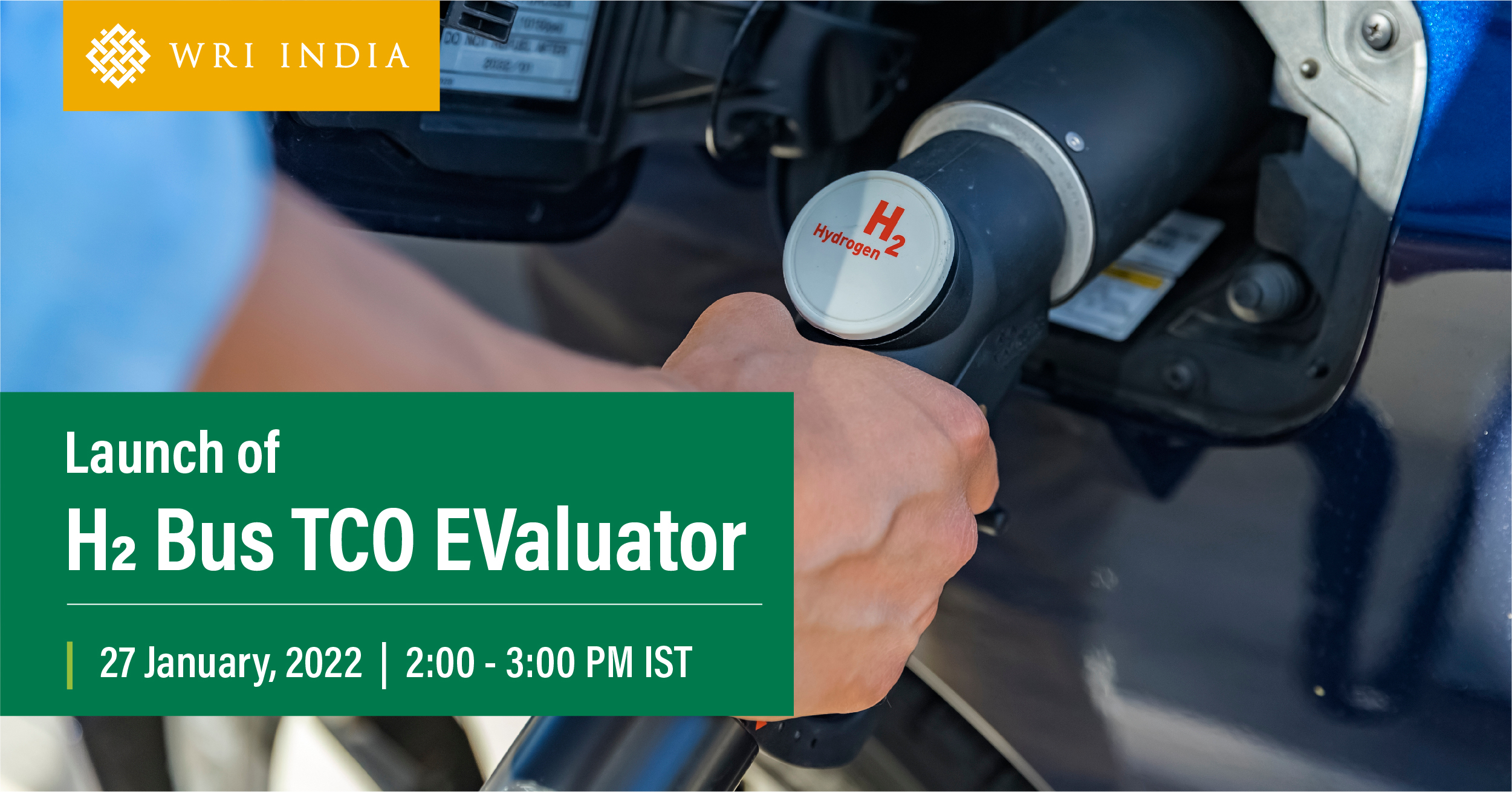2:00 PM to 3:00 PM

Finding sustainable ways to power the transport system has long been a vital component in tackling the climate crisis globally. When it comes to personal 2-wheeler and 4-wheeler segments, electric vehicles will have a dominant role to play in the coming years. However, as the size of a vehicle and the battery increases, hydrogen can become an increasingly attractive option.
WATCH THE FULL EVENT HERE
Hydrogen powered propulsion systems provide several key advantages over their battery electric counterparts including longer drive range, quicker refuelling times and minimal space constraints. With India’s National Hydrogen Strategy under preparation, it is critical to understand the feasibility of hydrogen’s application in the mobility sector, especially its application in Buses.
One of the key barriers for adoption of Hydrogen Fuel Cell (HFC) buses is their high capital cost of adoption, which in a price-sensitive country like India will play the most critical part in deciding the future of deployment of these buses. Typically, Total Cost of Ownership (TCO) analysis provides an understanding of the true cost of buying goods or services over its useful life. WRI India has developed a TCO model to understand the economic feasibility of HFC buses in comparison to their battery electric, diesel and CNG fuelled internal combustion engine counterparts. This model considers two important components of capital expenditure (CAPEX) and operational expenditure (OPEX) to assess the cost of ownership per kilometer travelled over the lifetime of these buses.
Through the TCO launch, this webinar will look to deep dive into a wide range of issues:
- What are some of the important components to be considered while purchasing HFC buses? How can TCO tool help in identifying those factors and help in developing feasible ownership models for procurement of hydrogen buses?
- Understanding the techno-commercial feasibility of HFC buses in the Indian context and identification of existing deployment barriers.
- What financial mechanisms and procurement models could enable HFC buses to eventually reach cost parity with battery electric buses and current ICE fleets in India?
- What are some policy levers that could be employed to enable adoption of hydrogen-based buses in India and possibilities of inclusion of HFC buses within the ambit of the FAME II scheme?
SPEAKERS
- Dr. Gitakrishnan Ramadurai, Associate Professor, IIT Madras
- Chandrashekhar Chincholkar, Strategic Advisor, KPIT Technologies (TBC)
- Dr. Guncha Munjal, Program Manager, Hydrogen, WRI India
- Rohan Rao, Program Manager, Electric & Hydrogen Mobility, WRI India
- Pawan Mulukutla, Director, Clean Mobility and Energy Tech, WRI India (Moderator)
